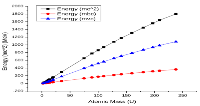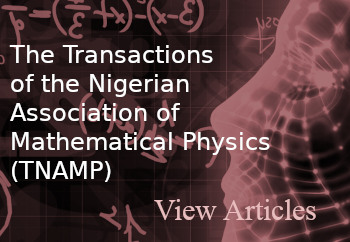DERIVATION OF MASS-ENERGY RELATION FOR COMPUTATION OF ENERGIES OF ATOMIC AND NUCLEAR PARTICLES
DOI:
https://doi.org/10.60787/jnamp-v66-317Keywords:
Speed of light, radiation law, blackbody, Planck, Wein, mass-energy relation, Bahjat, Einstein, transcendental equationAbstract
In this study, a new mass-energy concept (mvc) has been derived by employing blackbody relation and Einstein’s relativistic relation. Einstein’s relation, mc2, would apply perfectly to particles with the speed of light that is photons.The method employed semi-classical Newtonian concept of relativistic mass-energy theory, Bahjat mass-energy concept (mbc), Blackbody radiation and Plank’s radiation law. A solution of a transcendental equation was obtained using graphical means from which the conversion factor in the relativistic energy relation, mc2, is found to be vc, where v = 1.8 and c remains the speed of light. Results in the calculation of atomic mass units shows that Einstein’s mass-energy relation over estimates the energies of nuclear matter while that of Bahjat underestimates the same. Therefore, thenew mass-energy concept, E = mc2, becomes E = mvc, where v is the speed for particles with mass and v = c for a photon. Examples can be seen clearly in the unified atomic mass units and the calculation of binding energy.
Downloads
References
Leong, W. C.,& Chin, Y. K. (2005).Conceptual Development of Einstein’s Mass-energy Relationship.New Horizons in Education, No. 51.
Jammer, M. (2000). Concepts of mass in contemporary physics and philosophy Princeton: Princeton University Press
Bahjat R. J. Muhyedeen (2008). On heuristic viewpoints concerning the mass, energy and light concepts in quantum physics. European Journal of Scientific Research, 22 (4), 584-601.
Annamalai, C. & Antonio, M. (2023). Mass-Energy Equivalence derived from Newtonian mechanics. Journal of Engineering and Exact Sciences, 9 (8),1–4. ISSN: 2527-1075, ISSN: 2446-9416, doi: 10.18540/jcecvl9iss8pp15963-01e
Annamalai, C. (2022).The Mass-Energy Equivalence, SSRN Electronic journals.https://www.doi.org/10.33774/coe-2023-ck6jr-v2
Annamalai, C. (2023a). The Einstein’s Mass-Energy Equivalence and the Relativistic Mass and Momentum derived from the Newton’s Second Law of Motion. CoE, Cambridge University Press. https://www.doi.org/10.33774/coe-2023-ck6jr-v2.
Annamalai, C. (2023g) Mass-Energy Equivalence derived from Work and Kinetic Energy. Zenoto. https://dx.doi.org/10.5281/zenodo.8015743.
Annamalai, C. (2023h).A Mathematical Approach to the Momentum Equations of Massless Photon and Particle with Relativistic Mass. engrXiv.https://doi.org/10.31224/3030.
Perez, A., &Ribisi, S. (2022).Energy-mass equivalence from Maxwell equations. American Journal of Physics, 90(4), 304-313. https://doi.org/10.1119/10.0009156

Downloads
Published
Issue
Section
License
Copyright (c) 2024 The Journals of the Nigerian Association of Mathematical Physics

This work is licensed under a Creative Commons Attribution-NonCommercial-ShareAlike 4.0 International License.




